Survival gear doesn’t need to be elaborate or expensive. Some of the best items are common, easily-found products you may already have.
One of those items is a large metal cup. Here’s why you need one.
by Leon Pantenburg
I slogged along in the ranks, Springfield slung over my shoulder, headed toward the sound of the guns. I considered deserting or straggling, and had about made up my mind to turn and run when the shooting started. It was my intention to portray that unheralded, under-represented group of shirkers, cowards and malingerers that made up a sizable percentage of both armies. As an embedded journalist in the Confederate infantry, I had been conscripted to cover the battle of Champion Hill Civil War re-enactment between Vicksburg and Jackson, Mississippi.
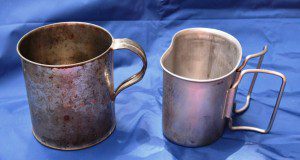
The Civil War replica, left, and the more contemporary military canteen cup have many uses in a survival kit. (Pantenburg photos)
Except for the Nikon and ballpoint pen hidden in my haversack, all my accouterments and weapons were authentic. It didn’t take long to form opinions.
The heavy wool uniform was like wearing a sweatsuit. The small kepi offered virtually no protection from the sun. The canteen was too small, the leather shoe soles were slippery and the authentic food really sucked.
But several common items proved invaluable. My cotton bandanna was soaked in water and worn around my neck to cool and protect it from the fierce sun. A flint and steel kit could stand up to the hard marching and campaigning, where as matches didn’t last in the heat and humidity. Hardtack was durable, but tasteless.

Me as a Civil War reenactor, 1981.
But the quart tin cup was a stellar performer. It served as my mess kit, and worked really well for boiling coffee and heating rations over a campfire. Water stations were set up all over, and we’d stop frequently to hydrate, replenish canteens and pour water over our heads. But the most appreciated use came as we were marching back after the battle.
A sutler set up along the line of march, and would fill any cup with cold beer for a dollar. He would take an IOU, and he did a land office business.
I’ve included a tin cup in my gear for many years. When I hiked the John Muir Trail in 1976, I carried a metal Sierra cup on my belt. At every running stream, I’d use the cup to get a drink. I also mixed instant oatmeal in it, and used it for just about everything.
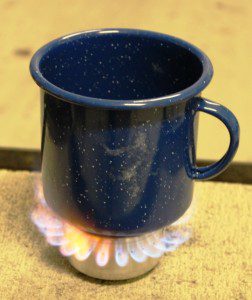
The stove and enamel cup work efficiently to boil water.
That was my first wilderness trip where a tin cup proved its worth. Give some thought to adding one to your survival gear.
Here’s what I have used a metal cup for:
- Mess Kit: I used a 40-ounce blue enamel cup and a plastic spoon as my only eating utensils during a nine-day canoe trip through the Boundary Waters. Weight was critical because of the frequent portages between lakes. During that trip the utensil was also used for picking blueberries, dipping water out of the lake for purification, brewing coffee, rinsing off after a sweaty portage, and various other tasks.
- Cooking: I typically carry an aluminum can alcohol stove in my 24-ounce metal cup, along with four ounces of alcohol in two small plastic containers. That is just enough fuel to last a day of cross-country skiing, snowshoeing or elk hunting. I put the metal cup directly on top of the alcohol stove, and brewing up a hot drink is quick and easy. If you have to warm up a hypothermic person, this tool can be a lifesaver.
- Campfire cooking: Save your stove fuel for emergencies. Time permitting, you can make a small fire and purify water or cook a hot meal over the flames. And it looks and feels really cool to do that!
- Bathing: NEVER pollute a water source by rinsing the soap off your body into it. Instead, fill your cup with water, get a good distance away from the source, wet yourself down and lather up. Rinse off the same way. You can also use the cup to hold water for brushing your teeth.
The cup can also be handy for dipping water out of suspicious source before purifying. In a pinch, you could also dig with it, but I wouldn’t waste my time digging a hole to make a solar still!
The tin or enamelware cups are cheap and can be found anywhere. Include one in your survival gear and you’ll be surprised how useful it is!
Please click here to check out and subscribe to the SurvivalCommonSense.com YouTube channel, and here to subscribe to our email update – thanks!

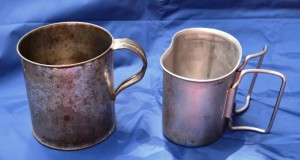
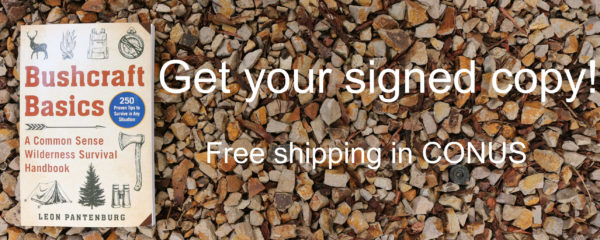


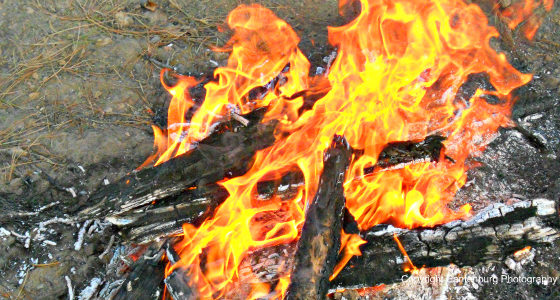
Leave a Reply